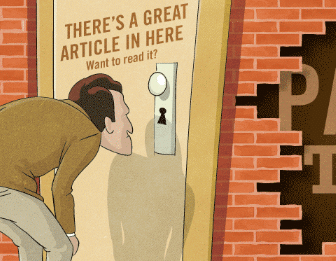Google has a reputation of being ‘the good guy’ of the digital era and its name is indeed well earned. Their search engine is the most popular one in the world, receiving over 63,000 searches per second and generating the most relevant answers to user queries. Its continuously updated algorithm has turned the Internet into one neatly organized place. After all, no-one’s trying to ‘Alta Vista’ something, are they?
To a large extent, Google dictates web security protocols (e.g. as of July 2018, all HTTP websites have been marked as ‘not secure’ within Chrome) and acts as a filter for relevancy. In addition, the company has rewritten the modern work culture and currently carries many different mission-driven projects under its wing, one of them being the Google News Initiative to which it pledged a total of $300 million.
As a company that pushes technological progress forward and acts somewhat as a regulatory body in the cyberspace, Google prioritizes user experience and user privacy.
That’s exactly what inspired the latest update Chrome 76 – but not without damage to publishers.
Why should publishers care about Chrome 76?
The latest Chrome update was released on the 30th of July, 2019. This update brought significant changes to the web: Adobe Flash will now be blocked by default for the sake of a faster and safer experience, developers will be able to easily install Progressive Web Apps (PWAs) on their desktop, and additional dev features will also be introduced.
However, here’s why publishers should care:
This update also disabled the incognito mode detection, meaning publishers will not be able to spot users who enter their websites in the private mode anymore. In the past, this was possible by sending a FileSystem API request but now, the privacy loophole has been closed.
As Google explained on its blog:
“Chrome will remedy a loophole that has allowed sites to detect people who are browsing in Incognito Mode. This will affect some publishers who have used the loophole to deter metered paywall circumvention.”
Perhaps it’s not a bad idea at this point to remind ourselves how metered paywalls work:
- Users who are not registered visit a website that has a metered paywall
- From that moment on, they are granted a limited number of articles to consume free of charge
- Users are tracked via cookies, which ensure that they hit a paywall once they’ve reached the limit of free articles
The issue that’s been brought to the fore by Chrome 76 occurs when users turn on incognito mode, which disables cookies, in order to continue reading for free.
Before the latest Chrome update, publishers could detect these attempts and serve users different content or even block their access entirely – unless they switch from private browsing to regular mode, which tracks their activity via cookies.
Google’s change implies user privacy has a priority over publishers’ incomes
According to The Independent, this update came after a recent study revealed that 93% of pornography websites collect user data and share it with third parties, which is outrageous to say the least. The diagram on page 6 of said study shows data flows to third-parties on major porn sites and displays the involvement of Alphabet, the holding company of Google.
The study explains third-party codes “allow companies to monitor the actions of users without their knowledge or consent and build detailed profiles of their habits and interests” which are then used for targeted advertising but also for online consumer surveillance and studying behaviors of different cohorts, or even manipulation (like we’ve seen with the Cambridge Analytica scandal).
With the new update, Google has patched a total of 43 vulnerabilities and underlined the importance of protecting users and their right to browse the web privately. For instance, people turn to incognito mode if they are using a borrowed device or if they want to hide their web activities and exclude them from their browsing history. Google also mentioned cases such as political oppression or domestic abuse, which are definitely situations where users do not want to be tracked online.
Today, tracking users has unfortunately been normalized, but the legal frame is changing positively. Take the GDPR for example, which is the most important data privacy change in the last two decades. This regulation insists on uncompromising transparency when it comes to collecting and sharing personal data, it holds both data controllers and data processors legally responsible for any breaches, made user consent mandatory, and ordered explicit explanation regarding the purpose for collecting data. All of this gave users back their rightful control of their personal data.
What can publishers that rely on metered paywalls do?
Google is well aware of the consequences of closing this privacy loophole. The company, however, feels that user privacy must not be compromised, no matter how they choose to use the private mode. Their advice to publishers is to adapt to this change and respect users’ privacy:
Sites that wish to deter meter circumvention have options such as reducing the number of free articles someone can view before logging in, requiring free registration to view any content, or hardening their paywalls. Other sites offer more generous meters as a way to develop affinity among potential subscribers, recognizing some people will always look for workarounds.
This Chrome update solves a great problem for users and their privacy, but consequently spawns another one for publishers.
The truth is, there is no way to control whether or not your site visitors will bypass your paywall using private browsing mode, and this is a huge issue. It might be nice to imagine that people always do what’s right, but you can’t count on individuals’ ethical responsibility: there will always be those who bypass these measures. Now rules guarding the right of online anonymity are so strict, it’s hardly possible to know who’s breaching these paywalls.
There is still a belief that all content should be free and accessible to users, despite the undeniable fact that money doesn’t grow on trees. People often fail to understand the difference between their right to be informed (access to news) and the opportunity to learn in depth about a certain subject (exclusive content such as essays, industry and research reports, or investigative journalism).
If we agree that content is publishers’ only product, bypassing paywalls is basically theft. But because of the technical limitations and the specificity of the digital economy, it’s not likely that going around paywalls will ever become a true legal issue or that individuals who practice this will ever be held responsible. But doing so diminishes publishers on so many levels.
So, are metered paywalls becoming a thing of the past?
In the past, metered paywalls have proven to be a user-friendly way of showcasing content quality and gradually establishing relationships with readers who will, hopefully, become subscribers.
Will this Chrome update put metered paywalls to history? Well, not necessarily.
Firstly, Chrome is indeed the most popular browser with almost 45% of market share, but it’s not the only one used.
Secondly, not all users will try to bypass paywalls using private mode. They may not even be aware of this ability.
Thirdly, lead by the ‘improvise-adapt-overcome’ mindset, some have already found a way to go around this newest Chrome fix and manage to detect the incognito mode.
Google has been a frenemy of publishers for a while now, side by side with Facebook and a few other tech giants (does Apple and its platform Apple News+ ring a bell?). Take the issue of controlling ad revenue for instance: the duopoly of Google and Facebook has been discussed many times in this context, and publishers still struggle to find a sustainable revenue model for their businesses. Sometimes, all of Google’s good deeds might make us forget the fact that it is not a non-profit organization.
When it comes to this Chrome update, the change is good for user privacy and we should all salute it, and try to adapt to it.
It is up to publishers to feel the pulse of their readers and adjust their paywall strategy accordingly. Maybe this update will damage their revenue streams severely, but maybe it will be just another bump on the road. One thing’s for certain: this update doesn’t make things easier for publishers who are still struggling with finding a sustainable business model.







